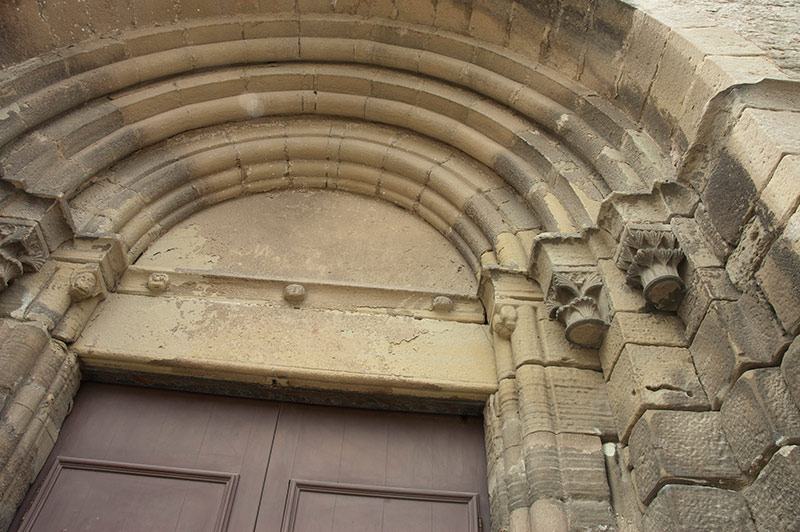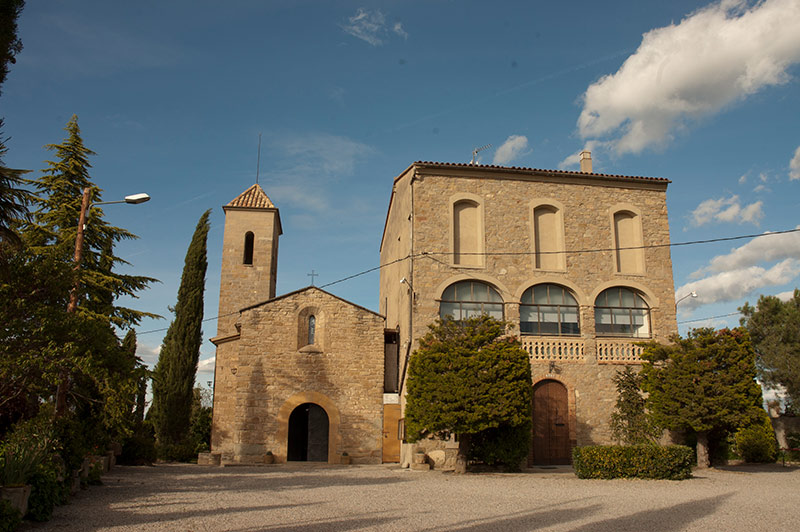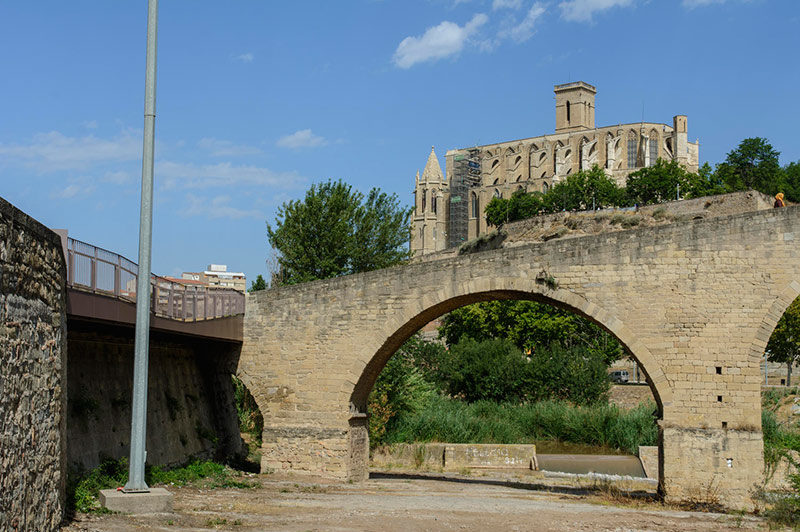BUILDINGS AND EXAMPLES OF RELIGIOUS ART FROM THE ROMANESQUE EPOCH
The pre-Romanesque column of the church of Santa Maria in Manresa (tenth century); today it is in the Museu Històric de la Seu, the History Museum, and can be visited on Sundays from 12h to 14h.
Of all the pre-Romanesque constructions erected at Puigcardener, due to being destroyed, and modifications undergone by the settlement, today there are no remains. The only remain conserved is a column (“capitell”) in the Museu Històric de la Seu, almost certainly coming from the old church of Santa Maria in Manresa, consecrated by the Bishop Jordi of Vic in the presence of the Count Sunyer during the first half on the tenth century. The exact date was between the years 914 and 947.
The Romanesque galleries of the Canonic Church in Manresa (eleventh century) inside la Seu. Can be visited on Sundays from 12h to 14h.
Within la Seu, forming part of the rooms of the Canonic monastery, next to the church, there are remains of the galleries. The upper one is like a cloister portal, and the lower ones were west facing and towards the light of midday. In the context of the architectural structure, and also taking into account the composition of the column bases and ornaments, it is logical to date them back to the first half of the eleventh century.
Remains of the Romanesque church of Santa Maria in Manresa (twelfth century) embedded in the walls of la Seu building today. It is necessary to enter through the cloister basement, going through the Basilica. It can be visited on Sundays from 12h to 14h.
When the gothic temple was constructed some elements of the Romanesque church erected in the second half of the twelfth century were taken advantage of. Today they are integrated into the northern wall and part of the belfry of the actual building. Although these remains are minimal in relation to the complete temple, if we add the foundations which have been explored, in reality these remains are very significant as they allow us to make out the layout and create a quite reliable reconstruction of the church.
Romanesque portal of la Seu (twelfth century) next to the northern portal, the actual gothic church of Santa Maria in front of the parc de la Seu.
This is the most interesting element of the old Romanesque church which has been preserved. In the past it was known as the Abadia (abbey), and today, in the light of its situation it is known as “portal dels Claustres” (portal of the cloisters).
This portal is associated with the church builders of Sant Cugat del Vallès, represented by Arnau Cadell, who is considered to be the architect. Chronologically it has to date back to the end of the twelfth century.
The Christ of Manresa (twelfth century). Next to the Museu de Tresors de la Seu. It is opened on the request of the visitor. You have to ask at the Basilica reception.
It is a coloured sculpture of Jesus Christ, suffering, holy and dead, as is evidenced by his fallen head and hanging body in contrast with his arms stretched out. The body of the crucifixion is covered with a white and blue striped sheet.



